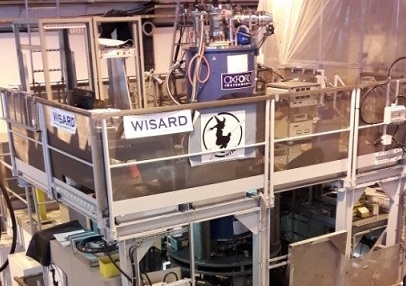
The WISArD experiment has been set up for the investigation of the weak interaction focussing on the b-n angular correlation coefficient of 32Ar by looking at beta-delayed protons emitted from the daughter nucleus 32Cl. As the protons are emitted from a moving source, the proton energy distribution is thus subject to kinematical broadening and a kinematical shift. Protons from the isobaric analogue state fed by a Fermi-type b decay allow searching for a small contribution of scalar currents to the dominant vector current, whereas protons from Gamow-Teller-type b decays allow searching for tensor contributions to the dominant axial-vector current. The experiment aims for a sensitivity limit of 0.1% for these exotic currents.
WISArD is situated behind REXTRAP in the ISOLDE hall and uses the former WITCH superconducting magnet. The 32Ar activity is accumulated continuously on a catcher foil in the centre of the magnet. The decay positrons will spiral around the magnetic field lines to a plastic scintillator readout by silicon photomultipliers in the upper hemisphere of the magnet. Protons are observed in silicon detectors above and below the catcher foil. The beauty of the present approach is that scalar and tensor currents can be searched for simultaneously. Similar measurements can also be conducted with other isotopes like 22Mg, 8Li or 8B.
In addition to these b-n angular correlation coefficient measurements, b-spectrum shape measurement to determine the weak-magnetism contribution to the b-decay spectrum as well as the Fierz interference term b complete the program at WISArD.
